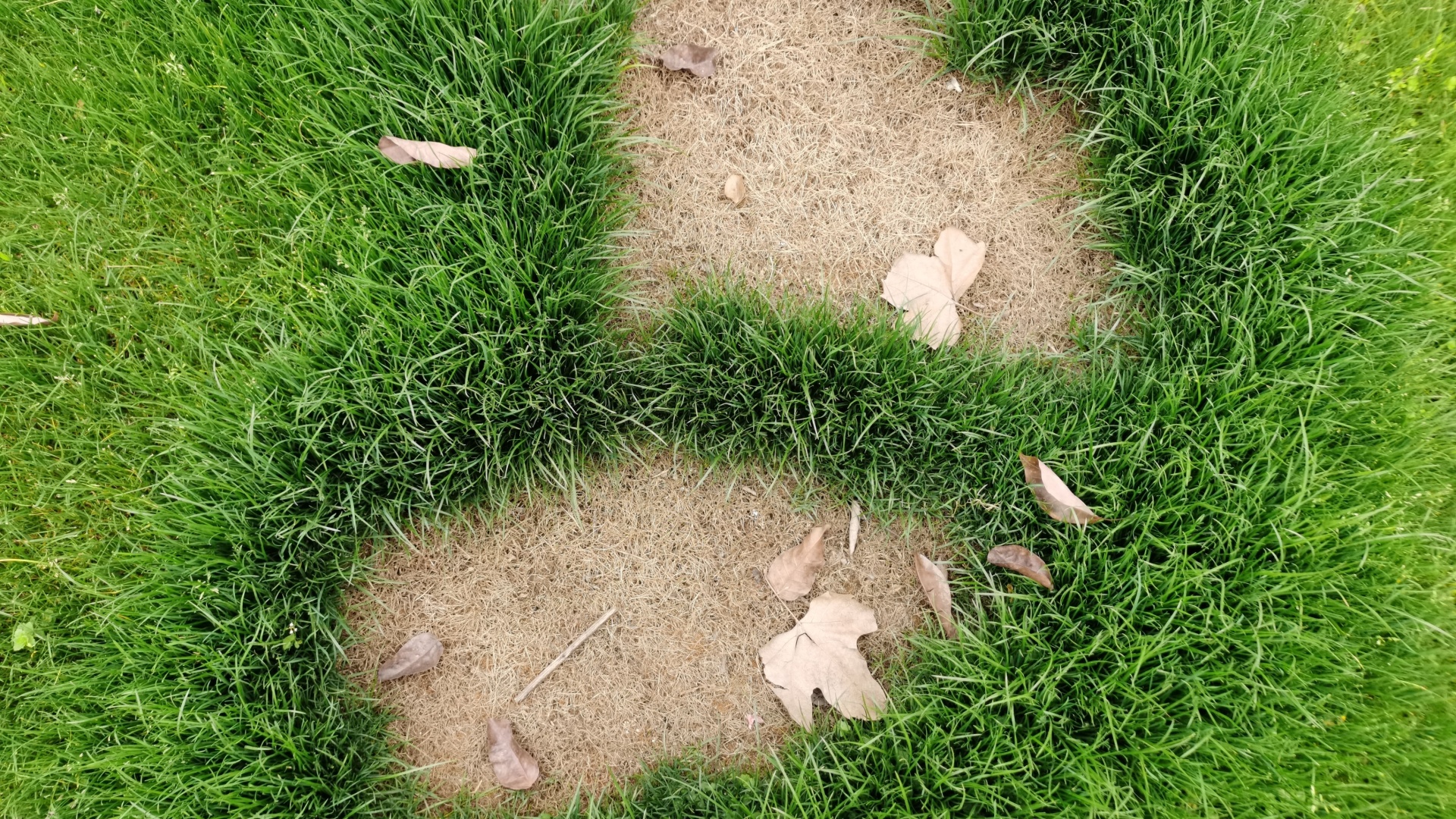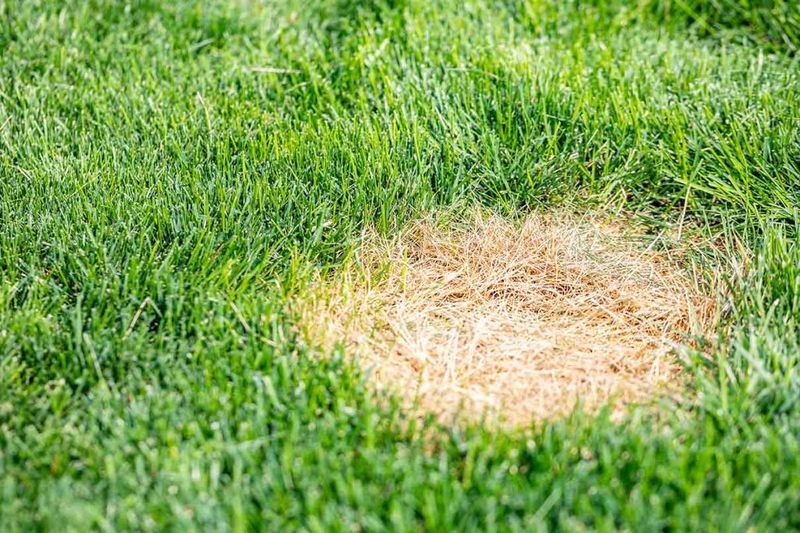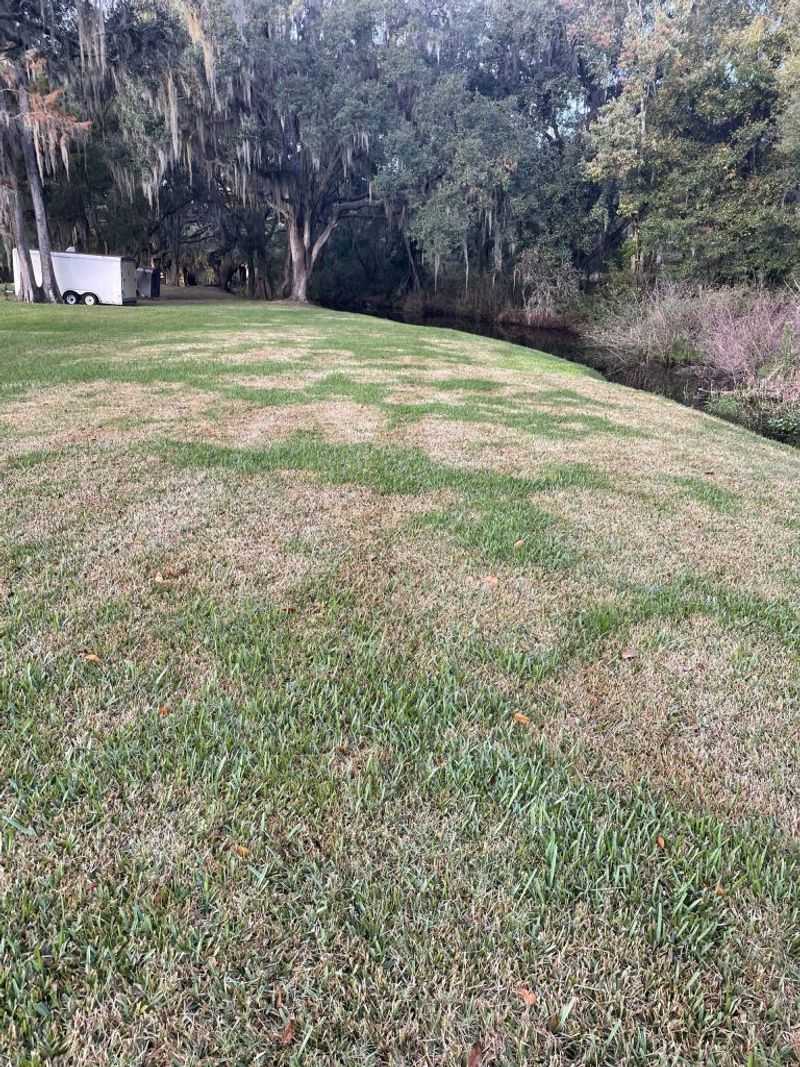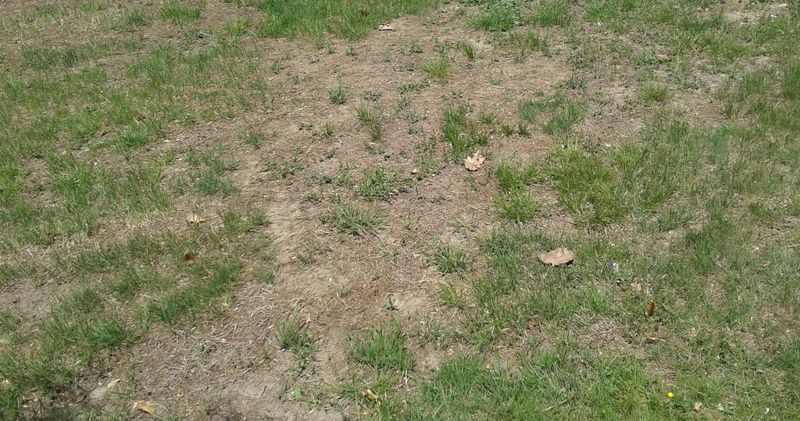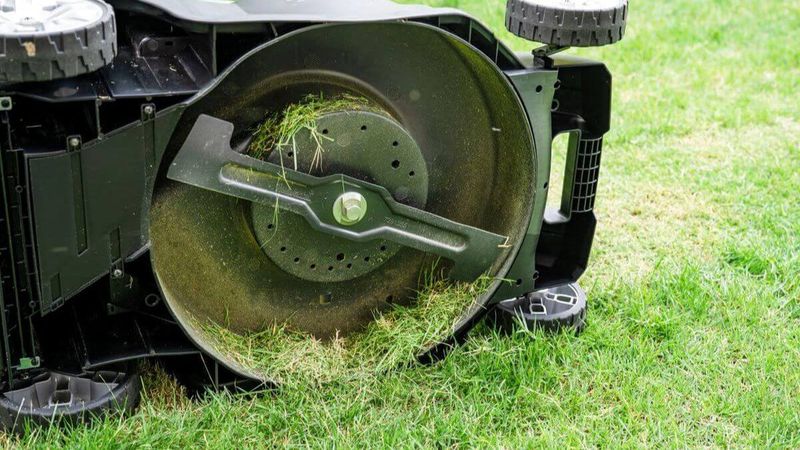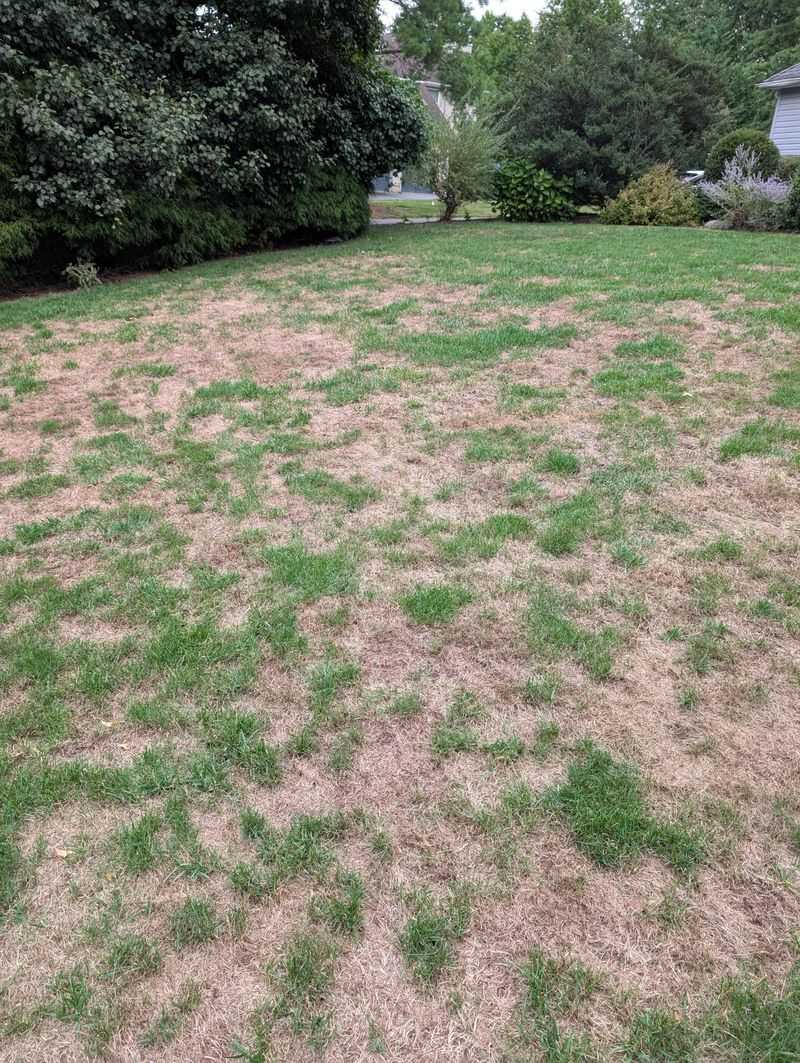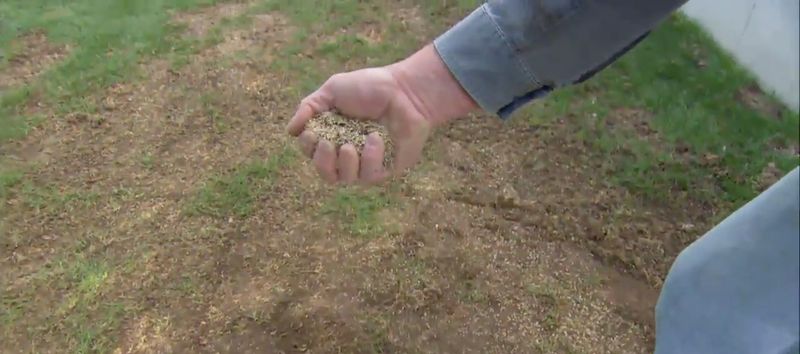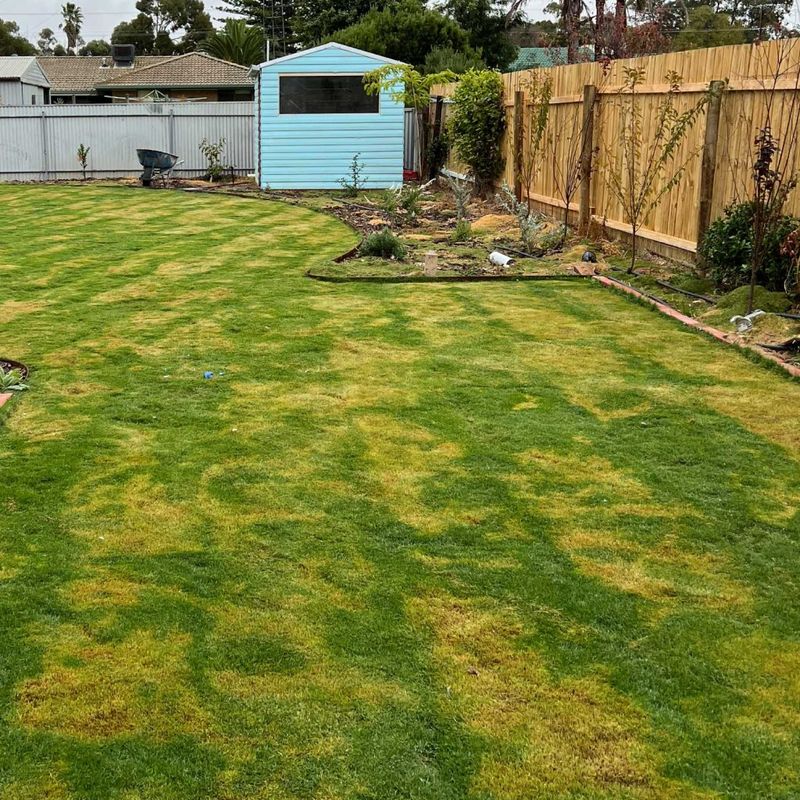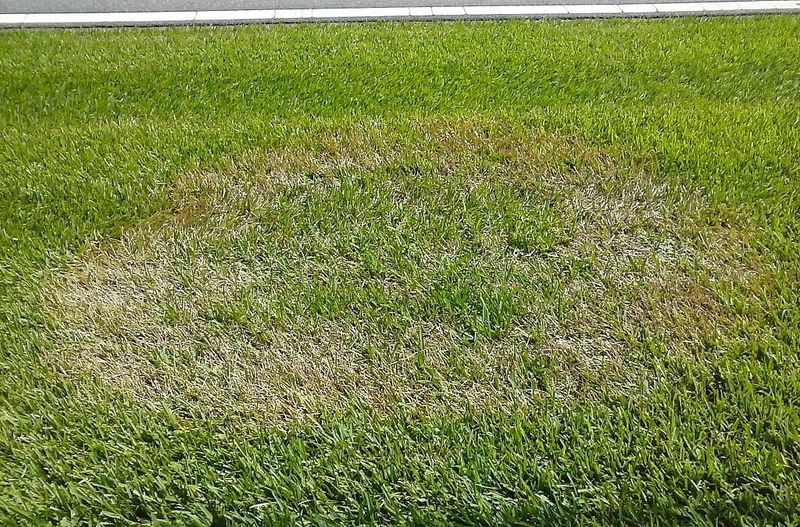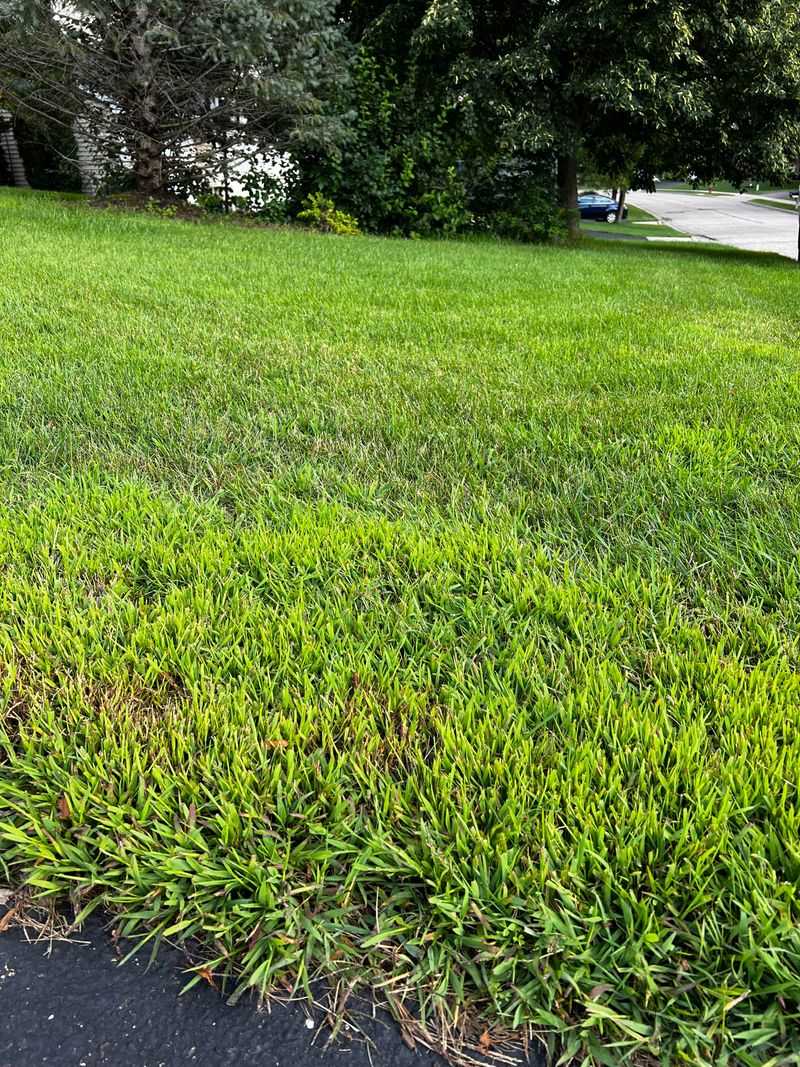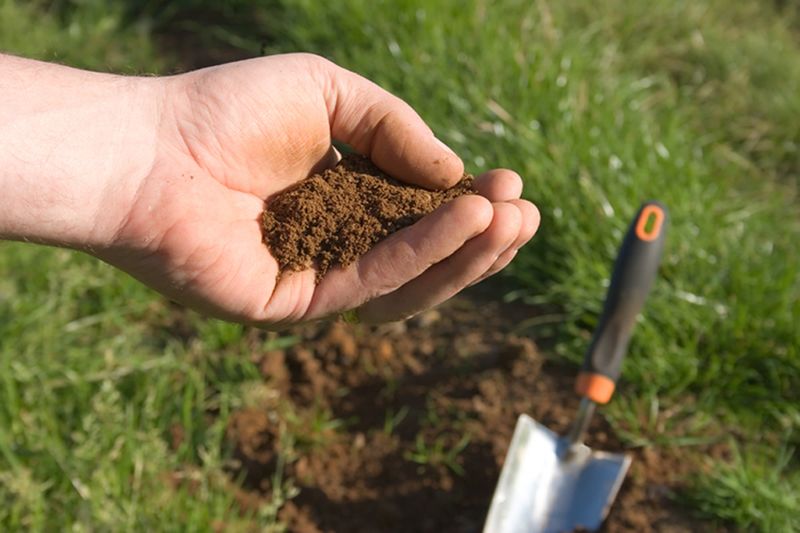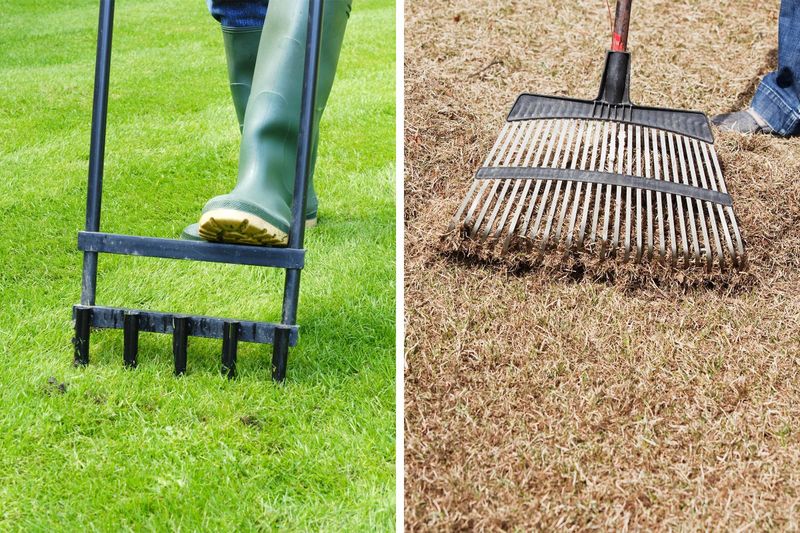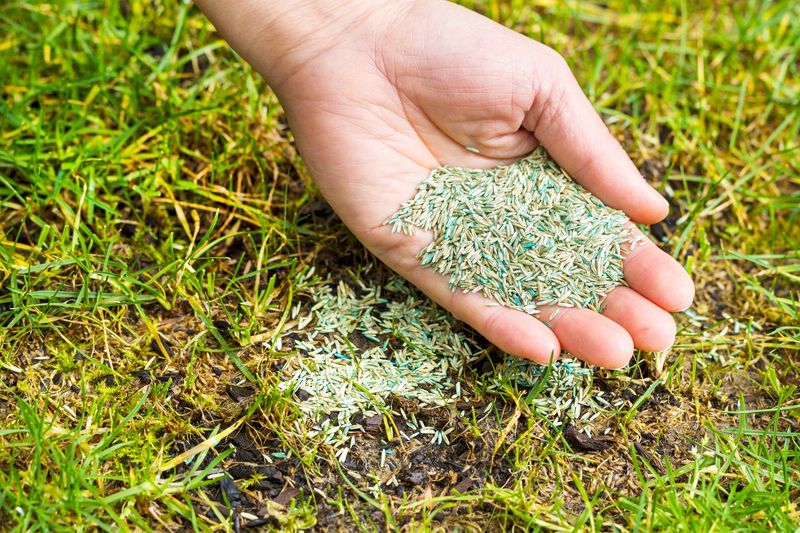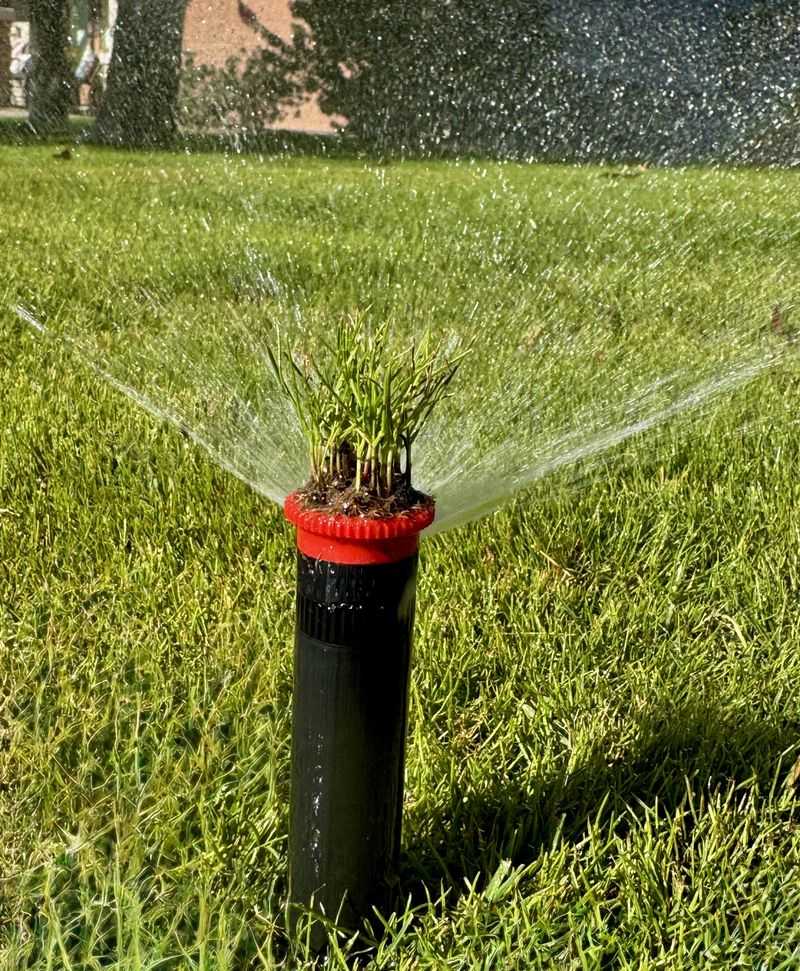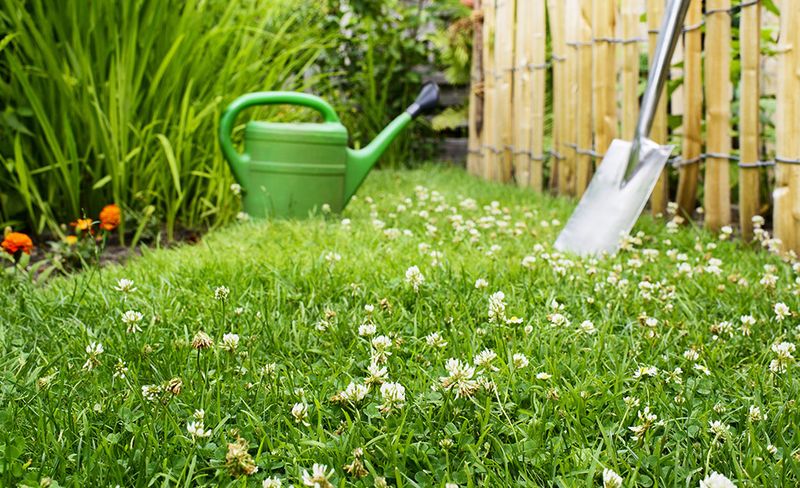Dead grass might look harmless, but mowing over it is like rubbing salt in a wound. Instead of helping your lawn bounce back, you could be digging a deeper hole.
Learn why this common habit backfires—and what smart lawn-lovers do instead to bring their turf back to life.
1. Spreads Lawn Disease
Dead grass patches often indicate fungal diseases like brown patch or dollar spot. Running your mower over these areas can spread spores to healthy parts of your lawn, turning a small problem into a yard-wide disaster.
Think of it like a classroom cold – one sick kid can infect the whole class! Your mower blades become contaminated carriers, dropping infectious materials everywhere they go.
Many lawn diseases are invisible until damage appears, so what looks like a simple dead spot might actually be patient zero in a lawn epidemic.
2. Masks Underlying Problems
Mowing over dead patches hides symptoms without addressing what’s actually killing your grass. The culprit could be grubs, pet urine, buried debris, or soil compaction – all requiring different treatments.
By simply cutting the dead grass shorter, you’re essentially sweeping problems under the rug. The underlying issue continues to worsen while you lose valuable diagnosis time.
Professional landscapers always investigate brown patches first because they know that proper identification leads to effective treatment.
3. Creates Bare Soil Spots
Mowing already-dead grass often removes what little protection remains over the soil. This exposed dirt becomes prime real estate for opportunistic weeds that can quickly establish themselves and spread throughout your yard.
Nature abhors a vacuum, and bare soil won’t stay empty for long. Without grass competing for resources, weeds gain an unfair advantage and establish deep root systems before you notice them.
Once weeds take hold in these bare patches, they become significantly harder to eliminate and control.
4. Damages Mower Blades
Dead grass patches often hide rocks, sticks, or hardened soil that can damage your mower blades. Dull or chipped blades tear rather than cut grass, creating entry points for disease in healthy areas.
Your mower represents a significant investment, and blade replacements aren’t cheap. Many homeowners don’t realize that running over these hazardous areas can lead to costly repairs beyond just the blades.
A single hidden rock can bend the mower’s crankshaft, potentially turning a simple blade sharpening into a complete engine replacement.
5. Prevents Proper Diagnosis
Examining dead grass closely provides vital clues about what’s killing it. Mowing destroys this evidence, making it harder for you or a lawn professional to determine the exact cause of the problem.
Different issues leave different signatures – insect damage looks different from fungal disease or drought stress. The pattern, color, and texture of damaged grass all help identify the culprit.
By preserving these dead patches temporarily, you give yourself the chance to properly diagnose and treat the specific problem rather than guessing.
6. Increases Soil Erosion Risk
Dead patches already have weakened root systems that barely hold soil in place. Mowing removes what little protection remains, leaving the area vulnerable to erosion from rain and wind.
Even a moderate rainfall can wash away topsoil from these exposed areas. This soil often ends up in storm drains or waterways, contributing to environmental problems beyond just your yard.
The nutrients in this eroded soil are also lost, making it harder to reestablish healthy grass later without significant soil amendments.
7. Complicates Reseeding Efforts
Freshly cut dead grass creates a layer of debris that prevents new seed from making good contact with soil. This thatch barrier significantly reduces germination rates when you eventually try to reseed the area.
Seeds need direct contact with moist soil to sprout successfully. The chopped dead grass acts like a barrier mat, preventing seeds from reaching the soil beneath.
Professional landscapers often remove dead grass completely before reseeding because they know this debris layer can waste expensive grass seed and valuable growing time.
8. Stresses Healthy Surrounding Grass
When you mow over dead patches, you’re forcing your mower to transition abruptly between healthy and dead areas. This creates uneven cutting that can stress and damage the healthy grass surrounding the dead spots.
The mower often dips into these areas, scalping the edges of healthy turf. These scalped areas become new weak points vulnerable to the same problems that created the original dead patch.
Additionally, mower wheels can sink into softer dead areas, creating ruts that collect water and cause drainage problems.
9. Creates False Appearance
Mowing dead patches might temporarily make your lawn look more uniform from a distance, but this cosmetic fix is misleading. The problem remains and will likely worsen despite the neater appearance.
This false sense of improvement can lead to delayed treatment. Many homeowners keep mowing, thinking the situation is under control, while the underlying issue continues to spread.
Your neighbors might not notice from afar, but you’re setting yourself up for a more extensive and expensive lawn renovation when the problem eventually can’t be hidden.
10. Prevents Natural Recovery
Some grass varieties can actually recover from stress if given proper time and care. Mowing removes the plant’s ability to photosynthesize through any remaining green tissue, eliminating its chance for natural comeback.
Certain grasses have remarkable resilience when left alone with adequate water and nutrients. The remaining living crown tissue can sometimes generate new growth if not further damaged by mowing.
By repeatedly cutting these struggling areas, you’re essentially kicking the plant while it’s down, preventing any possibility of natural recovery.
11. Test the Soil First
Before attempting any fix, grab an inexpensive soil test kit from your garden center. Dead patches often indicate pH imbalances or nutrient deficiencies that no amount of water or seed can overcome.
The test results will guide your specific treatment plan. If your soil is too acidic, you might need lime; if too alkaline, sulfur compounds can help; if nitrogen-deficient, a specific fertilizer formula is required.
Many homeowners waste money on treatments that don’t address their specific soil issues. A simple $10-20 test can save hundreds in misapplied products.
12. Remove Thatch and Aerate
Dead grass often indicates compacted soil or excessive thatch – that layer of dead stems and roots between green grass and soil. Rent a dethatching rake or machine to remove this barrier to healthy growth.
Follow dethatching with aeration – the process of creating small holes in your soil to allow air, water, and nutrients to penetrate. You can use a simple manual aerator for small areas or rent a power aerator for larger lawns.
This one-two punch of thatch removal and aeration creates the perfect environment for new grass to establish, whether from seed or sod.
13. Reseed with Matching Grass
Not all grass seed is created equal! Identify your existing lawn type and purchase matching seed for seamless repair. Using the wrong variety creates obvious patches that never blend properly.
Common cool-season grasses include Kentucky bluegrass, fescue, and ryegrass. Warm-season options include Bermuda, zoysia, and St. Augustine. Your local garden center can help identify your current grass if you’re unsure.
Prepare the soil by loosening it with a rake, spread seed at the recommended rate, then lightly rake again to ensure good seed-to-soil contact.
14. Water Properly, Not Excessively
Newly reseeded areas need consistent moisture, but drowning them won’t help. Water lightly twice daily for the first two weeks to keep the top inch of soil consistently damp but not soggy.
Once seedlings reach about 1 inch tall, switch to less frequent but deeper watering – about 1 inch of water two or three times weekly. This encourages deeper root growth and drought resistance.
Early morning watering (5-9 AM) is best as it reduces evaporation and fungal disease risk. Avoid evening watering which leaves grass wet overnight, inviting disease.
15. Consider Patch Alternatives
Some areas simply won’t support grass no matter what you do. Heavy foot traffic, deep shade, or poor drainage might make these spots better candidates for alternative ground covers or hardscaping.
Clover, creeping thyme, or moss make excellent low-maintenance lawn alternatives for trouble spots. For high-traffic areas, consider stepping stones with creeping plants between them or mulched pathways.
Transforming persistent dead patches into intentional garden features not only solves the problem but can add interesting visual elements to your landscape.

